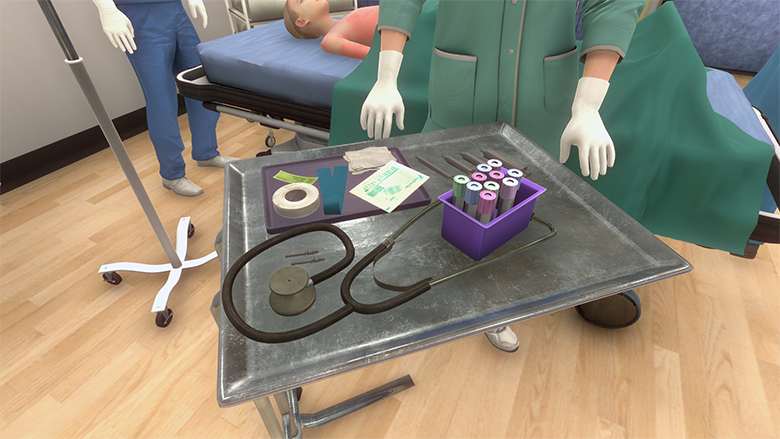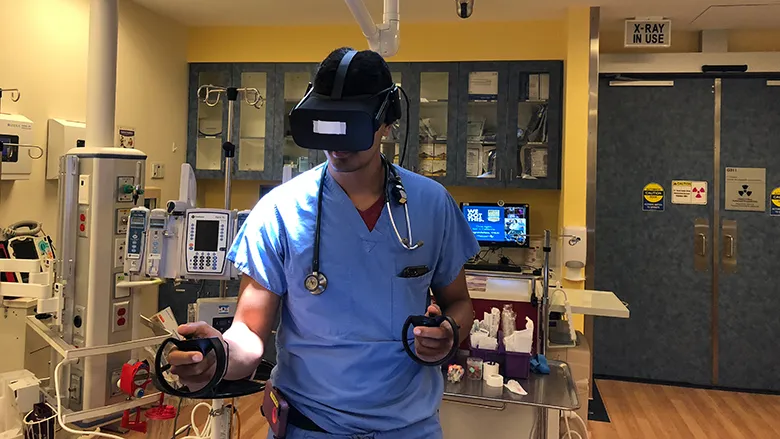Oculus is giving standalone VR headsets to 11 medical institutions as part of an expanding program investigating best practices for training medical professionals in virtual reality.
A “pilot study” was launched last year at Children’s Hospital Los Angeles with training software made in Unity focused on “resuscitation procedures for childhood seizure and shock.” Built by AiSolve with visual effects from BioflightVR, the proof-of concept was successful enough that CHLA “will now require the training for all incoming residents and offer it as an optional supplement for med students,” according to an Oculus blog post.
Dr. Todd Chang, one of the principle researchers on the project, wrote in an email they looked for physiological changes “that signify engagement and attention” and found that there was a quickening to physicians’ pulses when experiencing the resuscitation simulation wearing a VR headset “which resolves once they go out. It immediately resumes when they go back in. We believe this is a consistent finding that suggests an optimal heightened awareness of peak learning / performance. It is also not as catastrophically nerve-wracking as a real resuscitation.” Physicians experienced an increase of about 6.5 heartbeats per minute in the simulation compared with about 13.2 heartbeats per minute in a real resuscitation, according to Dr. Chang.
“We discovered that VR training modules should be targeted towards younger, less experienced trainees,” Dr. Chang said in a prepared statement. “That’s why the CHLA residency program and hospital have greenlit VR as part of a required curriculum for our interns prior to setting foot in our emergency department.”

The following institutions are getting Oculus Go headsets with the simulation later this fall:
- John Hopkins University Health System
- Kaiser Permanente Health Network, Southern California
- Medical University of Vienna
- New York University
- Langone Medical Center
- Stanford University
- Lucile Packard Children’s Hospital
- University of Bern
- University of Washington
- Yale New Haven Health
Training and practice in VR without the negative consequences of getting something wrong is one of the most promising potential uses for VR. With the medical field, though, physicians must be careful new technologies don’t detract from their care in some way. That means we’re due for a long evaluation process as this expanded program is examined more deeply. Dr. Chang wrote that they are also trying to identify “expected high performers and expected low performers” and that the software identified “key performance differences at the highest complexity end of the VR resuscitations that were definitely different between attending faculty and residents.”
“We first needed to prove that you could test people’s performance,” Dr. Chang wrote. “Now we are looking to see its effect over time as training.”


























